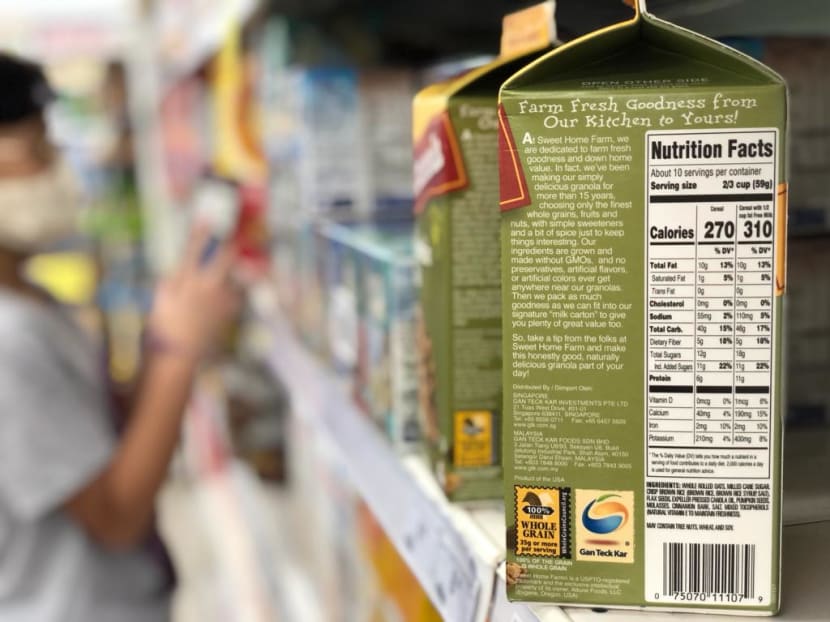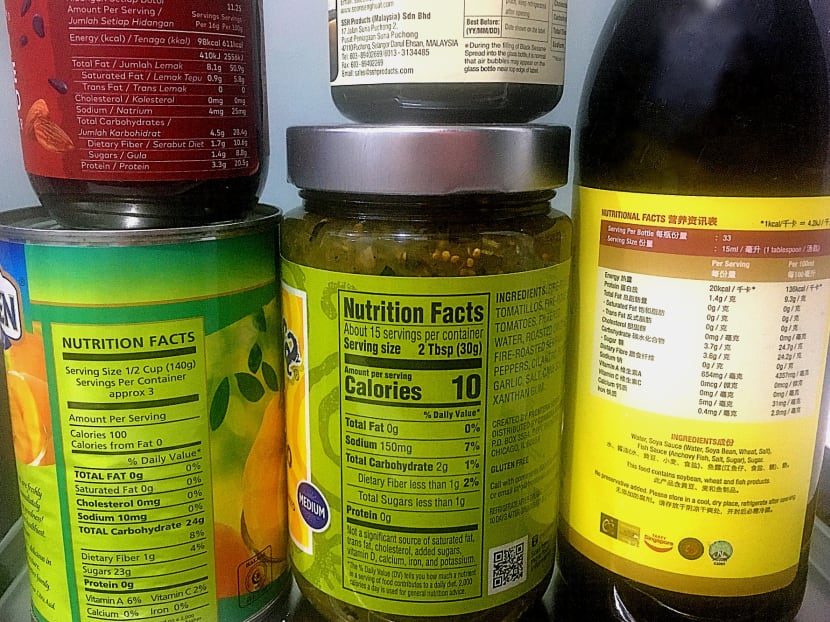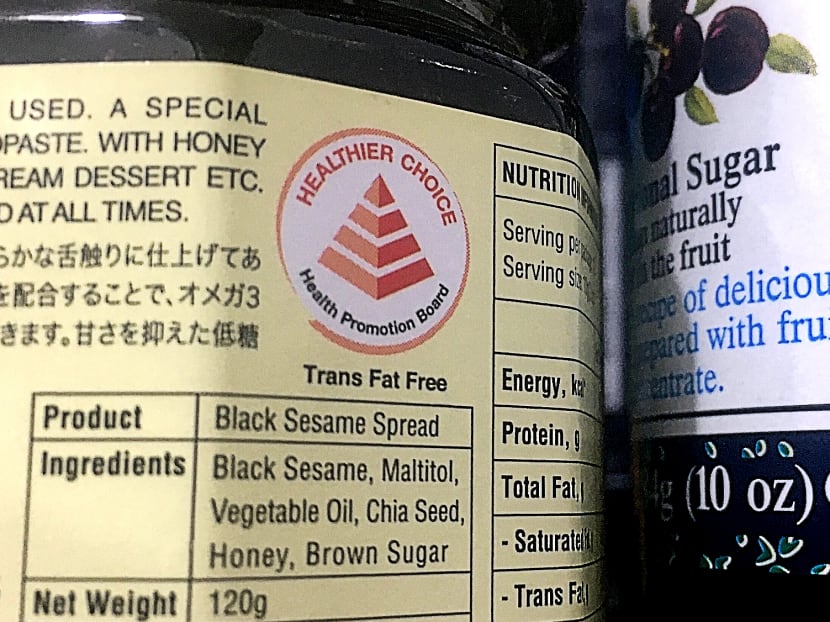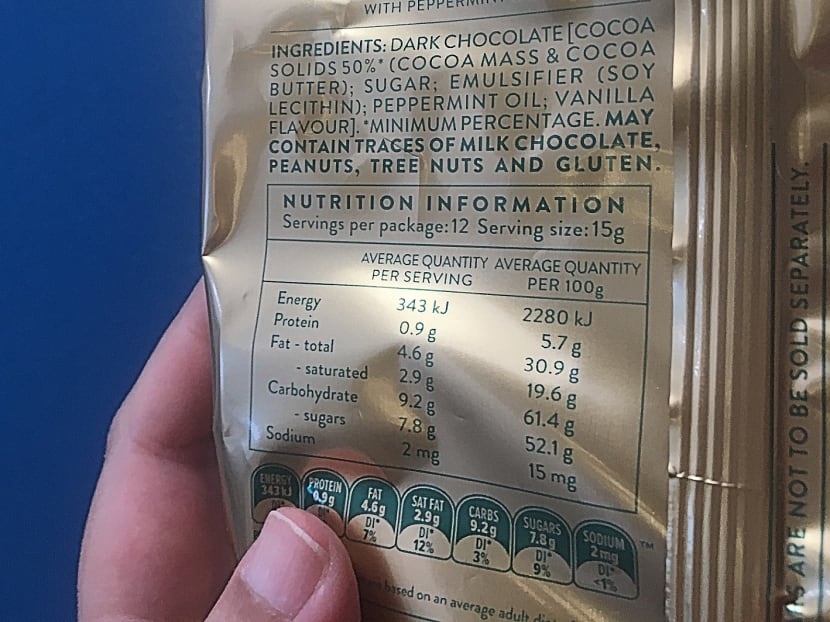Grocery shopping? Learn to read the nutrition facts label and check for fats, sugar and allergens
SINGAPORE — Ice cream, chilli sauce, jams, bread, cereal, fruit juice, chocolates and canned food have one thing in common on their packaging: Information about their ingredients and nutritional values.

Getting healthier foods for yourself and your family is easier when you know how to read and check the nutrition facts label and ingredients list on food packaging.
SINGAPORE — Ice cream, chilli sauce, jams, bread, cereal, fruit juice, chocolates and canned food have one thing in common on their packaging: Information about their ingredients and nutritional values.
It tells you whether the item contains unhealthy fats or oils, is high in sugar or sodium content or has allergens that will make you ill.
With more people cooking at home, and grocery shopping being the highlight of the day for some, it is more important than ever to be making better choices when buying food. What has not changed during the Covid-19 pandemic is the need to stay fit and eat well, in order to bolster the immune system and fend off infections.
Learning to check and decipher the information on food packaging is a habit that shoppers should develop. So before carting out food items in a rush on your next grocery run, pay attention to the food labels and keep these pointers in mind.
1. TAKE WITH A PINCH OF SALT THE CLAIMS OF 'REDUCED SODIUM'
In Singapore, nutrition claims such as “low in calories” and “sugar-free” are allowed if they meet the requirements of the food regulations and nutrient claims guidelines published in a handbook on nutrition labelling by the Health Promotion Board. This is based on the Singapore Food Agency’s Guide to Food Labelling and Advertisements.
When confronted with so many choices at the supermarket, it would seem easiest to choose a product that says it has “no added sugar” or “reduced sodium” or is “lower in fats”.
Is that how it works though?
Mr Caleb Mok, a representative dietitian from private medical group PanAsia Surgery, said that it is not always the case that food labels can help people make healthier food choices.
Take, for example, products such as fruit juices that have labels indicating that there is “no added sugar”. This can sometimes be misleading, Mr Mok said.
The juices do not have extra or “added” sugar, but they are naturally sweet, so this means that they would already have sugar content.
A product that “contains wholegrains” could be made up of a mere 30 per cent of wholegrains or it could be 100 per cent.
2. CHECK THE NUTRITION FACTS PANEL AND INGREDIENT LIST
To determine whether a product is healthier than other products in the same food category, Mr Mok, who has a special interest in preventive and rehabilitative nutrition, suggested checking the nutrition information panel and ingredient list rather than the claims at the front of the packaging.
The nutrition information panel — also called the nutrition facts panel — provides information on the serving size and nutritional value, including the energy, protein, fat, cholesterol, carbohydrates, sodium and dietary fibre content.
The ingredient list shows all the ingredients that make up the product.
Together, these two charts help you get more accurate information of the serving size and nutrient content to make informed choices.

3. INGREDIENTS ARE LISTED IN DESCENDING ORDER BY WEIGHT
Mr Mok said that the first item in the ingredients list will have the highest quantity by weight in the product, while the last one will have the least quantity by weight.
If “sugar”, “dextrose”, “high fructose corn syrup” or “molasse” is in the first few items of the ingredient list, it suggests that the item is high in sugar.
If “hydrogenated vegetable oil’ is at the start of the list, it hints of considerable trans-fat content, Mr Mok said.
Trans fat increases the risk of developing heart disease and stroke.
4. AVOID THESE BAD FATS
In general, women should not take more than 55g of fat a day; for men, they should not exceed 65g a day.
Not all fats are equal, and everyone should try to avoid consuming too much saturated fat and trans fat.
Mr Mok advised scanning through the ingredient list to ensure that the food item does not contain unhealthy oils or fats such as “partially hydrogenated vegetable oil”, “hydrogenated vegetable oil” or “hydrogenated vegetable shortening”.
Hydrogenation is the chemical process that increases the stability and prolongs the shelf life of oils by adding hydrogen into the oils. This process produces hydrogenated oil that harbours trans fat, Mr Mok said.
5. BE AWARE OF THE TYPES OF OIL USED IN FOOD PRODUCTS
For cooking and dressing oil, Mr Mok said that it is compulsory for food companies to state the specific oil used in the product. For example, canola oil, olive oil or palm oil.
However, for food products with added oil and fat, Mr Mok said that food manufacturers do not need to specify the type of oil and can use the term “vegetable oil” — unless they contain coconut oil, palm and palm kernel oil, cocoa butter and peanut oil.
“Coconut oil, palm oil, palm kernel oil and cocoa butter have to be specified because they have relatively higher contents of saturated fats, while peanut oil may cause allergies in some people.
If the type of vegetable oil is not specified, it could be other relatively healthier or “less harmful” oils such as corn oil, safflower oil, sunflower oil and canola oil, he said.
Besides the oil or fat used in food products, some products may contain traces of “food grade oil” used in the manufacturing process.
Mr Mok said: “The term ‘food grade oil’ means that the oil used in the manufacturing process — or machines that have direct contact with the food product and its ingredients — is derived from food (living matter). As a trace substance in food products, it is considered safe for human consumption.”
6. SUGAR, BY ANY OTHER NAME, IS STILL SUGAR
Even if you do not see the word “sugar” in the ingredient list, that does not mean it is not there. Mr Mok said that a simpler way to distinguish the amount of sugar of a product is to look through the nutrition information panel.
“Usually, sugar will be listed (as a sub-content) under ‘total carbohydrate’. The figure will reflect the amount of sugar in a product, accounting for naturally occurring sugar from the ingredients and the added sugar,” he said.
Some food products may have more than one type of sugar. Look out for other names that denote sugar. They include sugar molecules that end with -ose, such as dextrose, sucrose, glucose, maltose, lactose, as well as high fructose corn syrup, syrup, molasse, agave and others.
"Total carbohydrate" stated on food labels accounts for the amount of fibre and sugar in the product.
The human body cannot digest fibre. To calculate the amount of net carbohydrate that we truly consume, subtract the amount of fibre from the total carbohydrate.
For example, total carbohydrate of 50g with 5g of fibre means that the product contains 45g of net carbohydrate, which is sugar (or will be broken down into sugar in our body), both natural and added.
7. IDENTIFY THE 'HEALTHIER CHOICE SYMBOL'
Healthier food products are indicated by the Healthier Choice Symbol issued by the Health Promotion Board. It is a quick option for shoppers who are pressed for time or do not have patience to pore through all the food labels in detail.

Products with the symbol are generally lower in fat, saturated fat, sugar and sodium. Some are higher in dietary fibre and calcium compared with other products in the same category.
The Health Promotion Board’s Healthhub website states that there are about 2,600 different food products that meet the board’s nutritional guidelines for the Healthier Choice Symbol.
For example, products with the “higher in wholegrains” Healthier Choice Symbol contain at least 20 per cent more wholegrains compared with similar products from the same food category.
Products that carry the “lower in sugar”, “lower in sodium” and “lower in saturated fat” Healthier Choice Symbol contain at least 25 per cent less sugar, sodium or saturated fat respectively compared with similar products from the same category.
8. LEARN TO SPOT POTENTIAL ALLERGENS OR ADDITIVES
For people with food allergies or intolerances, it pays to be equipped with knowledge of different terms that may indicate certain food allergens on food packaging and labels.
Mr Mok said that statements on common allergens are typically placed under the nutritional facts panel. Statements such as “contains nut, soy, milk” will help guide people with food allergies or intolerances on what not to buy.
Do examine the ingredient list in detail.
“For example, those with milk allergy may look out for words like ‘whey’, ‘casein’ and ‘lactose’ to indicate presence of milk; those with gluten intolerance should spot words like ‘wheat’, ‘rye’, ‘barley’ or even ‘malt’,” he said.
Be on the lookout for phrases such as “may contain tree nuts” or “manufactured on shared equipment with tree nuts” before buying and eating a product, he added.

When in doubt, people with food allergies and intolerances should consult their allergist and healthcare team.
9. When choosing between similar products, compare the nutrition facts
If the serving sizes of the products are similar, Mr Mok advised comparing the contents on the nutrition facts panel to ascertain which is the healthier item.
If the serving sizes are different, check out the per 100g or 100ml serving size to compare the nutrients such as calories, sugar and protein content.
Consumers should also be aware that what they typically eat may be more than one serving.






